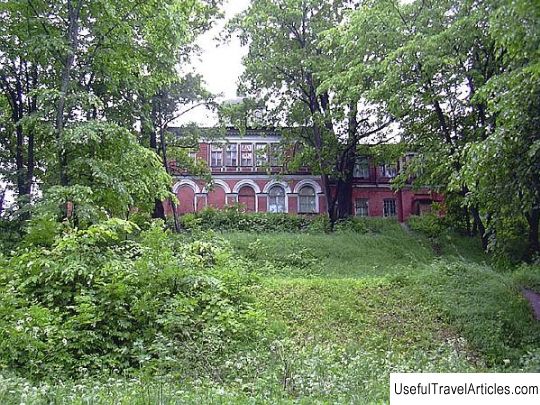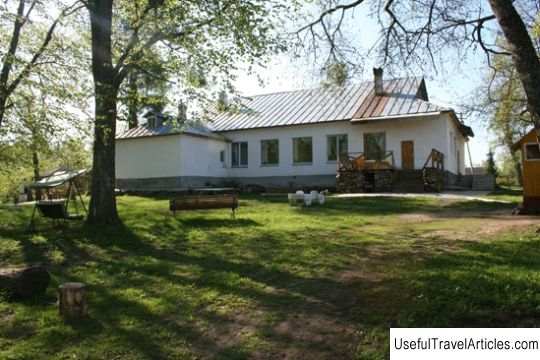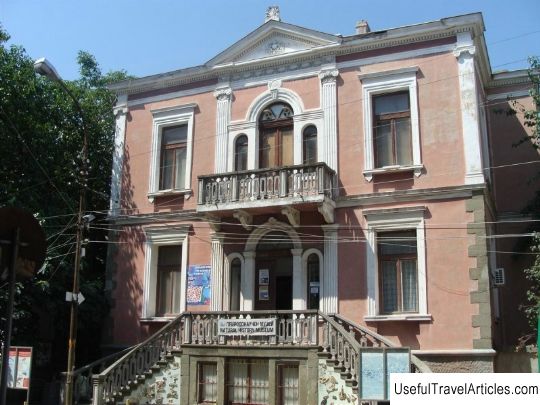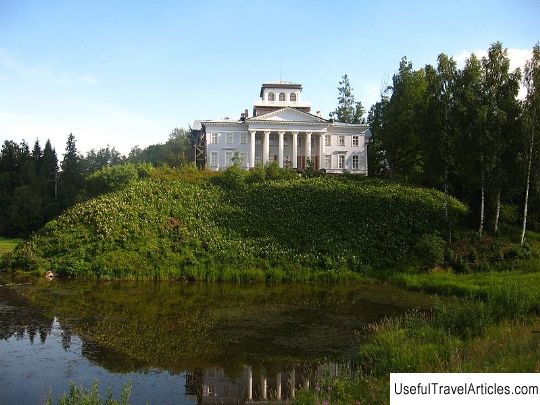Busan's estate description and photo - Russia - Leningrad region: Luga district
Rating: 8,2/10 (1690 votes) 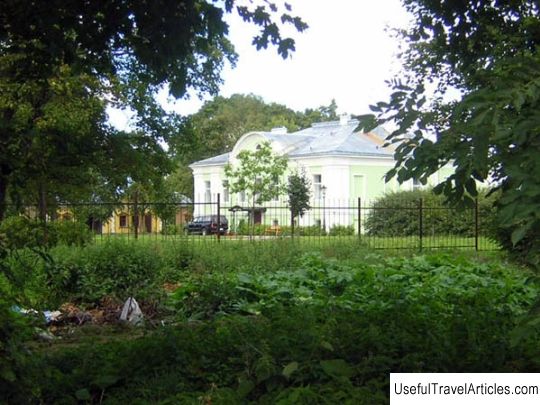
Busan's estate description and photos - Russia - Leningrad region: Luga district. Detailed information about the attraction. Description, photos and a map showing the nearest significant objects. Photo and descriptionBusana's estate is located in the north of Zapolye. In the 18th century. The village of Busarya was owned by representatives of two noble families, the Nazimovs and the Baralevsky, who became related to each other. At the village there was a gentlemen's estate with a house and an orchard, which belonged to the court counselor of the Auditing Department L.A. Baralievsky. In 1804 this part of the estate was inherited by M.L. Baralovsky. He began his career as a second lieutenant and in 1799, having risen to the rank of staff captain, retired and settled on the estate, was an assessor of the nobility assembly of the Luga district. The first part of Busan was owned by the retired titular adviser F.L. Nazimov. For good service to the Romanovs, his ancestors received lands in the Smolensk, Novgorod, and Pskov provinces. In the 18th century. the lands were divided among descendants, and Fyodor Lavrentievich to his son Pavel was able to leave only parts of Busan and the villages of Lyublino and Novoselye. In 1836, when Mikhail Pavlovich Nazimov married Sofya Mikhailovna Baralevskaya, these families became related again, then 1, 2, 4 parts of the village were united, and the third part with the Baralevsky estate went to her sister Glafira Mikhailovna Volodimirova. There was a regular garden behind the pond. Its borders were emphasized by rows of trees along the entire perimeter. Three alleys were laid inside the garden. The central one ran along the axis of the alley leading from the entrance to the manor house, the rest went from it to the corners of the rectangle. The regular basis of the park, made on a slope and terraces, corresponded to the strict architectural design of the house. A wet flood meadow stretched out to the bank of the Vrevka River, beyond the park. The vrevka flowed into a lake not far from the estate. When in 1859 M.P. Nazimov, his wife inherited his estate and part of Busan with the Baralevsky estate from G.M. Volodimirova. Soon she married her neighbor V.P. Efremova. As a result, the Baralievsky and Nazimov estates, which were adjacent to each other, were united. The estate has increased by 3 dessiatines and has been supplemented with a park and an old orchard. The master's wooden house was demolished, and young trees were planted in this place. The estates were united by a road that ran parallel to the road, a parterre was set up in front of the stone house, and groups of oaks were planted in the center. In this form, after the death of his mother, the estate was inherited by the daughter of the Nazimovs A.M. Olarovskaya. On a forest plot south of the manor house, she built two summer cottages for rent, but apparently due to a lack of money in 1890. she sold the estate to the owner of Zapolya P.A. Bilderling. In 1895, under the direct supervision of Bilderling, a program of work for the Luga district was developed. It was decided to study it thoroughly by conducting experiments in gardening, meadow growing, field cultivation. Based on the results of the observations, reports were drawn up, which are still of great interest. Since 1898, scientists S.P. Glazenpi, N.A. Menshutkin, V.G. Kotelnikov, F.V. Ovsyannikov. Much work has been done to monitor the soil. In 1895, a valuable soil map of the vicinity of Lake Vrevo was compiled, measurements of the depths of lakes and rivers were carried out in order to determine their effect on soils. Since 1904, even M.M. Prishvin is a famous writer, connoisseur of Russian nature, and traveler. The Bilderling station spared no effort or money, despite the fact that in 1895 it was taken over by the Ministry of Agriculture. In a stone manor house where a library and a museum were located, lectures were given on various branches of agriculture, and an agricultural school for 30 people for peasant children was opened in a wooden wing. But in 1910 the station ceased to exist. She was transferred to the Nikolskoye estate. In 1914, with the consent of Petr Petrovich Bilderling, a practical gardening school was opened in the estate. Today, after eight decades of ownerless existence, the estate has retained its general layout. Here you can find old trees in the lower and upper parks, a spring. Capital stone buildings have been preserved in the utility yard. There is a poultry house, but the stone stable built by the Nazimovs is empty and destroyed.   We also recommend reading Austrian Open Air Museum (Oesterreichisches Luftfahrtmuseum) description and photos - Austria: Styria Topic: Busan's estate description and photo - Russia - Leningrad region: Luga district. |
